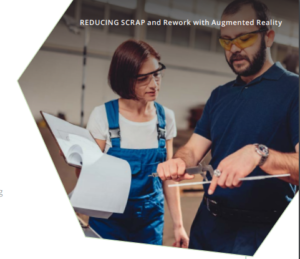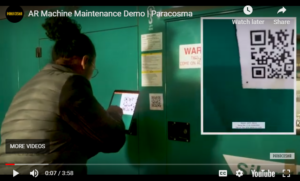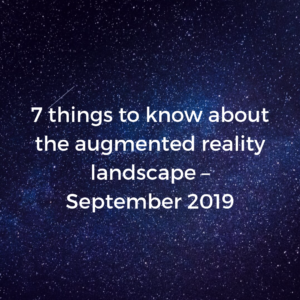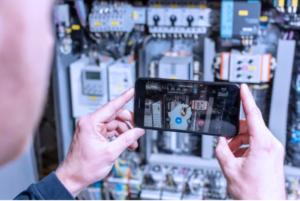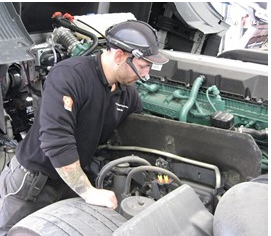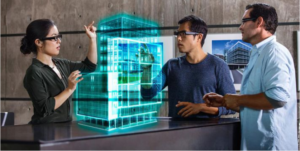4 Enterprise AR use cases

AR is beginning to have an impact in business contexts, as a wider range of enterprises pilot and adopt AR capabilities. The global market for enterprise AR applications is estimated to reach $14.2 billion by 2022, according to ARtillery Research. In a 2018 HBR-Analytics Services survey, 49 percent of respondents were piloting or had deployed some form of mixed reality in their company workflows, and 68 percent said that mixed reality would play an important role in achieving strategic goals.
AR is currently delivering significant value in areas such as training and simulation, work instructions, remote assistance, inspection and repairs, and knowledge capture.
According to PTC’s 2019 State of Industrial Augmented Reality report, however, pockets of AR innovation are taking place in verticals including consumer packaged goods, retail, architecture and construction, professional services, and education. Here, the tools are enabling new sales and marketing experiences, improving operational efficiency, increasing engineering quality, and creating new products and services.
Four use cases from companies that are deploying AR today:
- Unilever’s AR use case: Remote assistance and knowledge sharing
Global consumer goods manufacturer Unilever estimates that it will lose some 330 years of collective work and domain experience in just one of its European factories as its aging workforce retires. That loss of expertise in its plants – and lack of know-how among newer hires – can lead to costly downtime in its facilities.
The company began working with AR training and knowledge solutions provider ScopeAR, exploring ways to reduce that downtime with a live AR support application that allows technicians to collaborate with experts remotely. Users can share their view of a situation with a remote expert, and the AR maps work instructions and expert collaboration directly onto an object or area. Unilever says that it has seen a 50 percent reduction in downtime in facilities where the AR tools are in use, creating a direct ROI of 1,717 percent of the initial investment.
- Boeing’s AR use case: Wiring an airplane
Historically, engineers would consult 20-foot-long paper diagrams as they did their work.
The wiring of an aircraft has always been a big pain point, both in production and during inspection, according to Paul Davies, a Boeing research & technology engineer. What’s more, it’s a process with no room for error. Historically, engineers would have to consult their 20-foot-long paper diagrams of the complex and detailed wiring requirements as they did their work. Not only was the process inefficient, but it was also almost impossible to do correctly the first time, resulting in significant rewiring work for each plane.
Today, some of those engineers instead put on Microsoft Hololens that display digital 3D writing diagrams directly on KC-46 tankers and 767 freighters they are wiring. Initial studies indicate that the AR approach results in a 90 percent improvement in first-time quality when compared to using two-dimensional information on the airplane, and cut the time required to do the wiring work by 30 percent. That saves millions of dollars per aircraft, the company says.
- DHL Supply Chain’s AR use case: Better warehouse operations
Smartglasses help personnel locate, scan, sort, and move inventory without handheld scanners.
DHL was one of the first companies to explore AR back in 2014 and has recently expanded its “vision picking program” worldwide. The third-party logistics provider gives warehouse workers smartglasses (currently the latest version of Google Glass Enterprise Edition) which help them locate, scan, sort, and move inventory without using handheld scanners or referencing paper forms.
The integrated heads-up display overlays key parcel information within the company’s logistics hubs, scans barcodes, and relays instructions in real time. Workers using the glasses are 15 percent more productive, according to DHL. DHL has been progressively rolling them out to more of its warehouses around the world during the last few years, most recently expanding use to its internal express hubs in Brussels and Los Angeles, with plans to roll them out at airports in New York, Cincinnati, and Chicago. Looking ahead, DHL Supply Chain COO and CIO Markus Voss said the glasses could eventually be upgraded with object recognition.
- Lowe’s AR use case: Making DIY less painful
Home improvement retailer Lowe’s has focused on one particular statistic that could be the key to its continued growth: 32 percent of home improvement projects are abandoned before they even start. That amounts to some $70 billion. In fact, it’s one of the problems the company’s Lowe’s Innovation Labs has dedicated itself to solving – and AR has proven a particularly valuable tool in developing new solutions. Lowe’s Vision Navigation app overlays turn-by-turn digital directions, enabling customers to navigate its stores more efficiently. Customers shopping for two or more items were able to find products two times faster than with self-navigation, and the AR app also help associates (particularly new ones) do the same.
